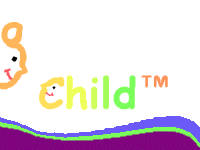10 Talking Tips for Toddlers
by www.TalkingChild.com
As pediatric speech language pathologists, the most common question we get asked
is, “What can I do to help my child start talking?” There are many
things that parents and caregivers can do to help encourage communication in
young children. We recommend using the following speech and language
stimulation techniques to instill in your child the need for speech. Children
need to be shown that speech is important for controlling and interacting with
the environment and for expressing ideas and feelings.
1) Read, Read, Read! The best thing you can do for a child is to read
books with them. Choose colorful books with large, simple pictures. Talk about
the pictures rather than just reading the text. Encourage interaction from your
child by asking him/her questions. Point to what you are talking about.
Click here for a list of books speech therapists recommend.
2) Encourage Communication. Once your child is old enough to communicate
using sign language or words encourage communication. Wait for your child to
ask, gesture, or sign for a toy on a shelf, rather than just getting it for
him. Do not anticipate your child’s need or desires before he has a chance to
make them known to you. If your child gets what he wants without communicating
for it, he will not bother to point, gesture or ask.
3) Wait, wait, wait. Delay your responses to your child’s pointing,
gestures or babbling when he wants things. Pretend you don’t understand what he
wants to see if your child will try to verbally communicate. Pausing allows
your child another chance to verbally express himself.
4) Parent’s Speech. Label objects and actions in real life and in
pictures. Use slow, simple speech when talking to your child. Never talk “baby
talk” to your child, but instead always use real words. For example, say
“bottle” rather than “baba.”
5) Self Talk. Talk out-loud about what you are seeing, hearing, doing and
feeling when your child is in earshot. Your child does not need to be paying
attention to you when you are talking out-loud to receive the benefits of
speech.
6) Parallel Talk. Talk out-loud about what is happening to your child.
Describe what he is doing, seeing, hearing and feeling when your child is in
earshot. Again, your child does not need to be paying attention to you.
7) Praise your child! Respond to your child’s speech attempts with
non-verbal and verbal praise. This will encourage him to try and communicate
more and more.
8) Expansion Modeling. Try and add one to two words to what your child
says when you respond back to him. Example: Child says “daddy” and you say
“daddy home.”
9) Use Sign Language. The use of sign language with young children has
been found to encourage language development not hinder it! For a list of
products that help teach your child sign,
click here
10) Sing to Your Child. Song promotes vocal play, attention, listening,
and speech. Sing simple songs your child can sing too. (Ex. The Itsy Bitsy
Spider; The Little White Duck; Twinkle, Twinkle, Wheels on the Bus).
More resources:
Copyright 2006 TalkingChild.com

